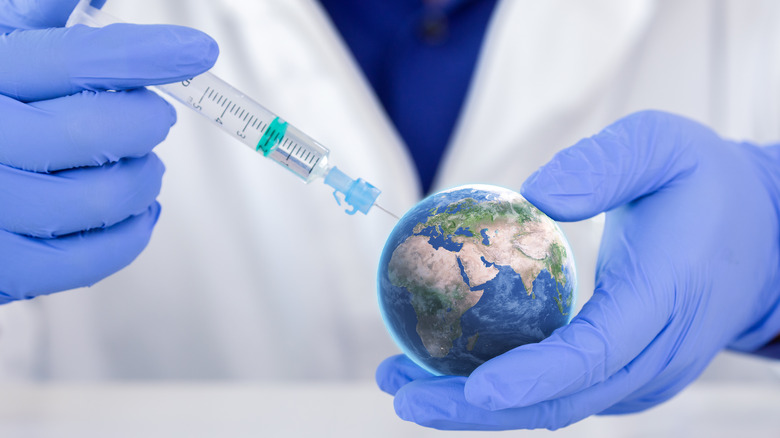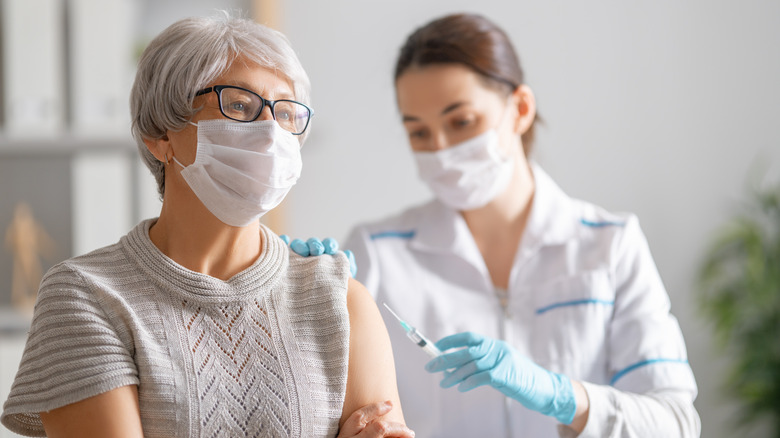What Is Herd Immunity?
Herd immunity occurs when a large percentage of the population becomes sufficiently immune to a disease, making its spread from person to person unlikely. In effect, reaching herd immunity protects the entire population, not just those immune to the disease (via Mayo Clinic). Herd immunity can be achieved in one of two ways: natural infection or widespread vaccination.
When you get infected with an infectious disease, like COVID-19, your body develops antibodies to fight off the disease. When you recover, a certain level of these antibodies stay with you to provide protection against future infection. However, this method is unreliable, since it is unclear exactly how long natural immunity protects you from getting sick again. It would also significantly increase the number of deaths. That's why the best way to achieve herd immunity is through widespread vaccination. When you get vaccinated against a disease, you also develop protective antibodies that help prevent infection. Unlike natural infection, however, you don't have to get sick to acquire vaccine immunity.
How many people need to be vaccinated to reach herd immunity?
In order to reach herd immunity through widespread vaccination, a certain percentage of the population must get vaccinated against a particular disease. In general, around 50% to 90% of the population must acquire vaccine immunity before herd immunity can be achieved (via Health). While scientists initially estimated that between 60% and 70% of the population in the United States needed to get vaccinated against COVID-19, infectious disease experts are now saying it might take closer to 90% immunity to prevent transmission and stop the circulation of the virus.
This is largely due to vaccine hesitancy and the emergence of more easily transmissible variants of COVID-19. "Because this virus is so contagious, it's going to require a fairly high portion of the population to be fully vaccinated or to have a prior infection to reach herd immunity," Dr. Amesh A. Adalja, an infectious disease expert and senior scholar at the Johns Hopkins Center for Health Security, told Health."That's going to be incredibly hard, as we have vaccine hesitancy in the country." However, Dr. Adalja notes that the U.S. doesn't need to have a zero transmission rate to end the pandemic. By vaccinating the most vulnerable communities, the virus can eventually become more manageable. "We're not going to get to COVID zero," he said. "COVID-19 is going to be more like the flu."


